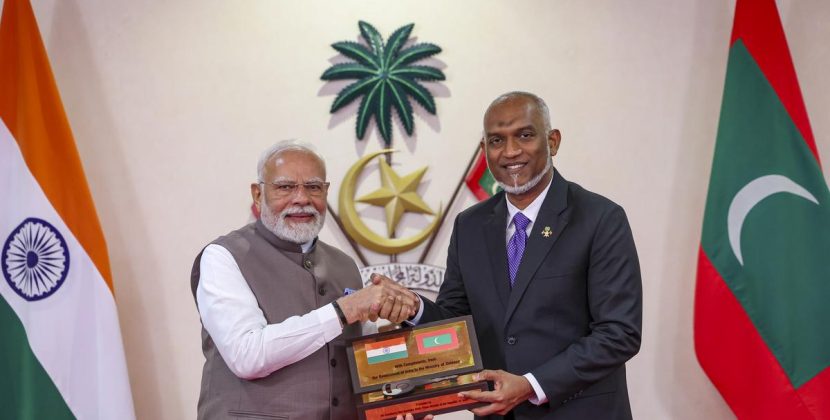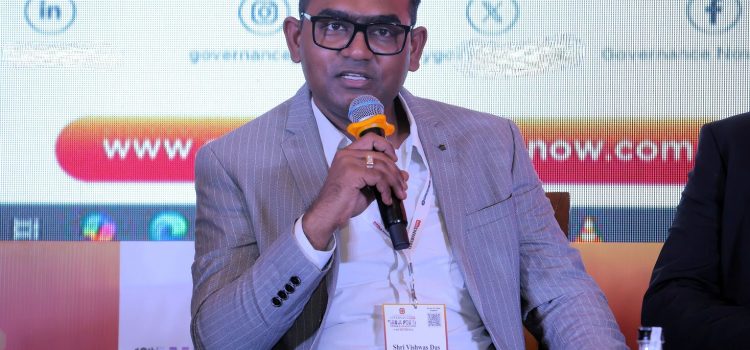
US President Donald Trump has once again stirred debate in global tech circles by calling on American technology firms to stop hiring from abroad, particularly from India and China and focus on creating jobs for Americans at home.
Speaking at a high-level Artificial Intelligence (AI) Summit in Washington on Wednesday, Trump denounced the “globalist mindset” of tech companies such as Google and Microsoft, accusing them of exploiting American freedoms while building factories overseas and employing foreign workers. “Under President Trump, those days are over,” he declared, pushing for a renewed sense of “patriotism and national loyalty” in AI innovation.
The speech has drawn sharp reactions across the world, including in India, where a significant portion of the tech workforce is engaged with US companies either directly or through offshore delivery models.
To assess the implications, we spoke with Vishwas Dass, a graduate of the Takshashila Institution’s Public Policy programme and an expert on technology and international policy.
Q1: Given the current AI capabilities of India and China, what are the risks and benefits of the US attempting to localise its entire AI development ecosystem, as outlined in Trump’s “Winning the Race” strategy?
According to Dass, Trump’s “Winning the Race” strategy, which proposes complete localisation of America’s AI development pipeline, presents a double-edged sword for global innovation, especially for countries like India.
“If enacted, US companies would face operational and staffing disruptions. Many already rely on skilled workers from India, a country which has built a massive IT export ecosystem,” Dass said. He pointed out that Indian IT firms are responding proactively, by ramping up local hiring in the US, establishing nearshore centres in Canada and Mexico, and expanding into higher-margin, AI-based services within India.
While Trump’s push could temporarily dent remittance inflows, 36 per cent of India’s $111 billion remittance income in 2022 came from countries like the US, UK and Singapore, Dass believes India’s strategic moves such as Startup India and Digital India can soften the blow over time.
He further noted: “India’s IT sector generated $194 billion in revenue during 2022–23, contributing eight per cent to the GDP and employing over 4.5 million professionals. About 70–75 per cent of this revenue is export-driven. The industry is resilient and increasingly future-ready.”
Q2: Could Trump’s emphasis on ‘America First’ in AI development trigger retaliatory policies or tech decoupling from China and India and what would that mean for global AI governance?
In response to this question,Vishwas Dass explained that Trump’s “America First” approach could deepen tech decoupling trends and alter the global AI landscape significantly.
“The Biden-era export restrictions already limit India’s access to advanced AI chips like Nvidia’s H100. Trump could double down on such policies, further delaying India’s AI infrastructure goals, including the IndiaAI mission, which plans to deploy 10,000 GPUs,” Dass said.
Citing a report from the India Electronics and Semiconductor Association (IESA), Dass warned that chip restrictions could derail crucial data centre projects. He also referenced AI expert Andrew Ng’s concerns that over-restriction may backfire by pushing countries like India to build independent compute ecosystems, diluting US dominance in global AI.
Yet, Dass highlighted India’s countermeasures, including its ₹76,000 crore Semicon India Programme and strategic partnerships under the iCET and TRUST frameworks with the US and EU. “India is laying down the infrastructure for AI and semiconductor self-reliance while hedging against geopolitical risk through diversified alliances,” he added.
He further pointed to Google’sAI Opportunity Agenda for India, which estimates that AI adoption could add INR 33.8 lakh crore in economic value by 2030 and help achieve a $1 trillion digital economy by 2028.
Q3: How practical is it for US tech giants to eliminate reliance on Indian and Chinese workers and infrastructure, considering their deep-rooted roles in data processing, AI training, and R&D?
Commenting on the feasibility of completely cutting ties with Indian and Chinese talent, said such a move would be “extremely difficult, if not self-defeating,” for US tech firms.
He drew insights from The Technopolitik survey by the Takshashila Institution, which found that 21.7 per cent of respondents ranked talent as more critical than infrastructure in driving national power, while 53.4 per cent preferred open migration due to its role in attracting investment.
“India is not just a low-cost service hub anymore, it is a core node in the global AI and digital services value chain,” Dass asserted. “A sudden decoupling would disrupt global R&D pipelines and severely affect tech diplomacy, especially given that 45.4 per cent of surveyed stakeholders see the US as India’s most important technology partner.”
That said, Dass acknowledged that 95 per cent of respondents supported India’s domestic semiconductor development, indicating a strong desire for self-reliance without completely cutting off international cooperation.
Trump’s renewed nationalist rhetoric on AI may bolster domestic sentiment, but experts like Dass caution against overlooking the complex interdependence of global tech ecosystems. “What we are seeing is not just a political speech, it is a flashpoint in an ongoing global realignment of technological power,” Dass concluded.
India, with its digital ambitions, demographic dividend, and expanding R&D base, stands at a critical juncture. Whether it chooses to respond with defensive posturing or proactive leadership in AI governance will shape its position in the global tech order for years to come.











